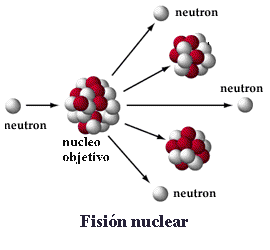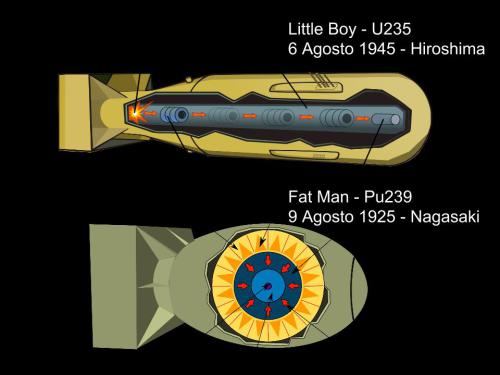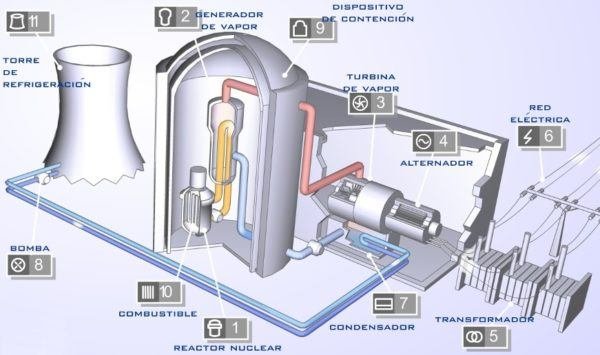Understanding Nuclear Energy, part # 2
Hello again my dear Steemians, in this opportunity, I bring before you, the second part, a post that I think has, besides much potential, a lot of fabric to cut, and that is the issue of Nuclear Energy, specifically nuclear fission It is not easy to explain and understand, and has a lot of material to study, it also has a very rich history since it was discovered by Lise Meitner and her collaborator Otto Hahn, in 1938, besides telling them that the date that I just mentioned, is not the oldest, in terms of historical background, of the study of this complicated science. In the year of 1896 the French physicist, Henri Becquerel, discoverer of radioactivity, realized that some chemical elements emitted radiations, he also discovered that these radiations were different from X-rays, and also possessed different properties, to the three that he achieved discover name, rays Alpha, Beta, Gamma, along with his collaborator Marie Curie, but this my dear friends is an open-mouth in regard to the history of this exciting subject.
Today we will be talking a bit about what it refers to, Nuclear Fission.
Nuclear Fision
 >
>
As we can see in this image, Nuclear Fission, is given when bombed, the atom, more specifically the nucleus of some chemical element, with neutrons, this action causes a reaction that the nucleus of the atom, divided into two, to In the fission process, two or three neutrons are said to be able to continue interacting with more nuclei, thus reproducing the same process. This complex process is called a chain reaction.
The issue of nuclear fission is very delicate, because you have to take care that only one of the neutrons that are released, make your fission, because if you can not get any other neutron to continue, simply the fission is lost, but if there are more than two, the control is lost and the Nuclear Explosion happens.
The issue of nuclear fission is very delicate, since you have to take care that only one of the neutrons that are released, make your fission, because if you can not get any other neutron to continue, simply the fission is lost, but if there are more than two, the control is lost and a disaster occurs, Nuclear Explosion.

Here we can observe in more detail how is a nuclear chain reaction, we see the left side as a neutron, is thrown against the nucleus of a Uranium atom 235, before this event, the nucleus is divided into other nuclei with lower atomic weight than the original element, in this case U-235, we can also observe, that is issued as a result of this event, three neutrons that are responsible for continuing the chain reaction, it should be noted that in the process of fission occur, neutrons, gamma rays, and large amounts of energy, this energy is used to heat water and obtain by the steam of this electricity.
Critical Mass
It is the minimum amount of material, necessary, so that in the component, a nuclear chain reaction, the critical mass of this component, depends a lot on its physical form and its density, and this why ?, Due to that the neutrons that occur in a fission travel through space in free form, to maximize the possibilities, said neutrons have to be able to go further, in order to increase the probability of impacting against a nucleus and thus cause a chain reaction.
Why does the physical form depend?
The best physical form for this material, would then be a sphere, while the worst, as a flattened sheet, it is more likely that the neutrons, fly from the space of the sheet without colliding, with no other, core.
The critical mass can be reached, placing a piece of material in the center of an implosion or even throwing an object formed of this material, against another of the same material, thus triggering a chain reaction. Let's look at an example of this.

These are the drawings of the mechanisms of the two bombs used in Japan, one in Hiroshima and the other in Nagazaki, we can see that in the one used in Hiroshima, a portion of Uranium 235 was thrown against another equal, causing this reaction chain, after reaching its critical mass, which caused the release of large amounts of energy, this is known as nuclear explosion, in the Nagasaki, the way to reach the critical mass is a bit different, since a sphere of plutonium 239, he was detonated a series of explosives around himself, this in order to reach its critical mass, and thus get an atomic explosion, after the chain reaction.
How the Nuclear Reactor works
First, we must understand how a nuclear power plant is composed:
The nuclear power plant is composed of:
1.- Nuclear Reactor
2.- Steam Generator
3.-Steam turbine
4.-Alternator
5.-Transformers
6.-Electric Network
7.-Capacitor
8.-Pump
9.-Containment Device
10.-Fuel
11.-Cooling Tower

The operation of the reactor is based on fuel, this is Uranium or Plutonium, after being extracted in a mining process, it is passed through a series of chemical processes, which convert it into enriched uranium, to this process and is worth the redundancy is called, enrichment of uranium, and is the one that is carried out, to make fissionable or that can be fissured the nuclei of the same, installed in the form of bars in the reactor.
The nuclear reactor has strict security measures, which have to be met to the letter by the personnel who work there, the construction of the same demands that it is very safe, to the point that the building where the nuclear reactor is located, and what is called a containment building, is nothing else than a large vault made of extra thick concrete, its walls can measure up to 3 meters thick, the idea of doing this building in this way is to try to avoid radioactive spills in the case that an accident happens.
In a pressurized water reactor, the pressure vessel has an approximate height of 12 meters, inside of which are the fuel elements, which are approximately 150 of these, within each bar there are fuel pellets of enriched uranium or plutonium, these bars measure approximately 5 meters high.
Nuclear fission is given inside the reactor, the fuel is arranged in the aforementioned bars, this process is controlled by the control rods, these go up and down inside the fuel rods to control the fission process and prevent it from get out of control, the chain reaction has to be controlled and remember that when the fission process begins large amounts of energy are released, and this process can not be left to chance. Recall that nuclear fission reactions, in a nuclear power plant can only be maintained under certain conditions, on the one hand an isotope is required, in this case it is uranium 235 and on the other hand it is the moderator, which can be water, water acts as a neutron retarder, they can not travel at such a high speed because otherwise they would go through the nucleus without being able to achieve nuclear fission and in turn the chain reaction, the control rods, also help to slow down the process and control the chain reaction since at the moment of lowering them and placing them between the fuel, they do not allow the neutrons to pass, because they absorb them and thus control the chain reaction.
I hope you like this post, soon I will be bringing the third part, I thank all those who dedicate their time to read this material.
For more information visit these pages:
https://twenergy.com/a/que-es-la-energia-nuclear-384
https://cuentos-cuanticos.com/2016/09/28/1-de-septiembre-de-1939/
Atte.
@jorge150785